Concealable stun guns offer valuable self-defense options for women, with distinct advantages over tasers in terms of power, range, and user-friendliness. While tasers have a longer range and specialized applications, stun guns are more powerful, compact, and suitable for everyday carry. Women should research local laws regarding stun guns and tasers, considering their specific needs and situations. Concealable stun guns from reputable brands provide high voltage outputs, ergonomic designs, and versatile features like LED flashlights and alarms, making them discreet yet effective tools for women's personal safety.
In today’s world, self-defense options are more diverse than ever, with concealable stun guns and tasers at the forefront. Understanding the differences between these two powerful tools is crucial for informed decision-making. This article delves into the intricacies of tasers and stun guns, exploring their unique features, legal considerations, power dynamics, safety aspects, and real-world applications. For women seeking effective yet concealable self-defense options, we’ve compiled a list of top choices tailored to their needs.
- Understanding Tasers and Stun Guns: A Basic Overview
- Legal Considerations for Concealable Self-Defense Weapons
- Taser vs Stun Gun: Power and Range Analysis
- Safety Features and User Experience: What Sets Them Apart?
- Real-World Applications: When to Choose Each Weapon
- Popular Choices: Top Concealable Stun Guns for Women
Understanding Tasers and Stun Guns: A Basic Overview
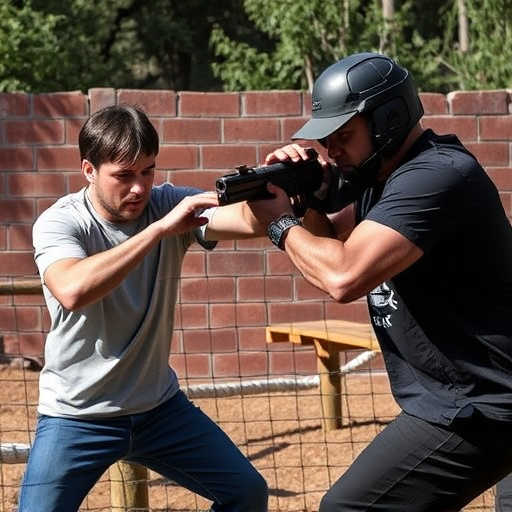
Tasers and stun guns are both non-lethal weapons designed to temporarily incapacitate a target, but they operate through distinct mechanisms. Tasers, officially known as Electronic Control Devices (ECDs), use electrical currents to disrupt muscular control, causing the target to fall to the ground and become immobilized for several minutes. This disruption is achieved by firing small probes into the target’s body, which then deliver the electric shock. In contrast, stun guns generate a powerful electric discharge that temporarily paralyzes the nervous system, leading to muscle spasms and disorientation. Unlike tasers, stun guns do not require physical contact to deploy their effects.
When considering self-defense options, especially for women looking for concealable stun guns, understanding these differences is crucial. Tasers are generally more powerful and can be more effective at a longer range, making them appealing for outdoor or high-risk situations. Stun guns, on the other hand, offer a non-contact option that can be easier to use in close quarters or when the attacker is wearing protective gear. The choice between a taser and a stun gun depends on individual needs, preferences, and the specific self-defense scenarios one might encounter.
Legal Considerations for Concealable Self-Defense Weapons
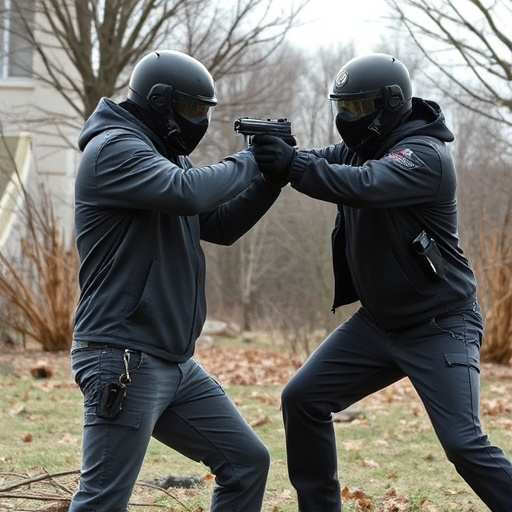
When considering self-defense weapons, it’s crucial to understand the legal landscape surrounding concealable options like stun guns versus tasers. The legality of carrying such devices varies greatly depending on location, with some areas permitting them for personal protection while others heavily restrict or outright ban their possession. For instance, in many US states, concealable stun guns are legal for women (and men) to carry without a permit, whereas tasers often require specific licensing or permits due to their potential as less-lethal law enforcement tools.
Women seeking self-defense options should carefully research the laws in their region before purchasing either device. Some states allow open carry of stun guns, while others limit them to concealed carry with certain restrictions. Additionally, local ordinances and zoning laws might further complicate matters, especially when considering the specific features and power levels of different models. It’s a delicate balance between personal safety and respecting legal boundaries.
Taser vs Stun Gun: Power and Range Analysis

When comparing Tasers and stun guns, one of the key aspects to consider is their power and range. Both devices are designed to incapacitate an assailant temporarily but differ significantly in how they achieve this. Tasers, formally known as Conducted Electrical Weapons (CEWs), fire two thin probes connected to high-voltage, low-amperage electrical circuits. These probes deliver a powerful pulse that disrupts the body’s neuromuscular system, causing muscle stiffness and temporary paralysis. The range of a Taser is typically around 30 feet (9 meters), making it suitable for close-quarters combat.
In contrast, stun guns, often called electronic control devices (ECDs), use electrical current to overwhelm the nervous system, leading to loss of balance and muscle control. Stun guns are generally more powerful than Tasers, with some models capable of delivering a shock up to 50,000 volts. Their range is usually shorter, around 15–20 feet (4.6–6 meters), but they often have a higher rate of fire and can be more easily concealed, making them popular choices for self-defense, especially among women looking for concealable stun guns.
Safety Features and User Experience: What Sets Them Apart?
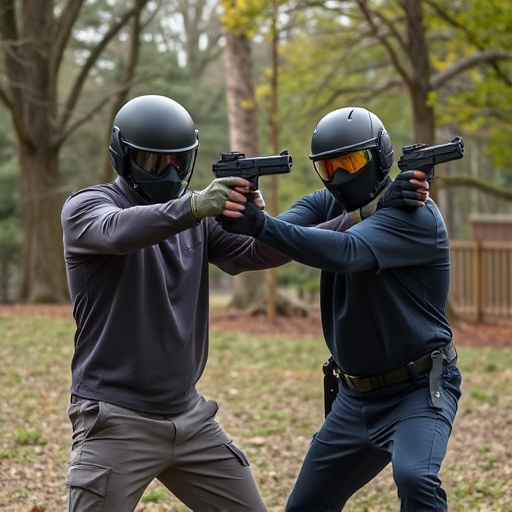
When comparing a Taser and a stun gun, one key area to focus on is safety features and user experience—especially considering their intended use cases. Stun guns, often more compact and concealable, are popular choices for personal defense, particularly among women seeking concealable stun guns for women. Their design emphasizes ease of use with a simple trigger mechanism, making them accessible for individuals with varying levels of physical strength or training. Many stun guns also offer features like automatic shut-off after deployment to prevent accidental discharge and overuse.
In contrast, Tasers have a distinct operation that involves firing probes into the target, delivering an electric shock. This method requires proper training as improper use can lead to serious health complications. Tasers are designed for law enforcement and self-defense scenarios where the user is equipped with specialized training. Their safety features include safety mechanisms to prevent excessive force, but they may not be as user-friendly or concealable as stun guns, making them less practical for everyday carry by civilians without formal training.
Real-World Applications: When to Choose Each Weapon
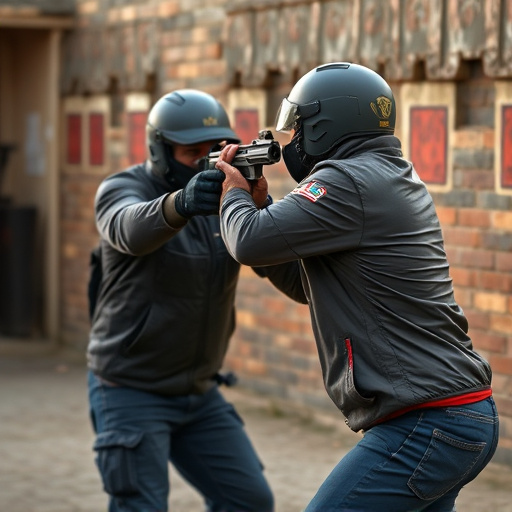
In real-world scenarios, the choice between a taser and a stun gun depends on various factors, including the user’s intent, the legal landscape in their region, and the specific situation they’re facing. For individuals seeking concealable self-defense options, particularly women who may want to protect themselves discreetly, stun guns offer a more subtle approach. These devices are designed to temporarily incapacitate an aggressor with a powerful electrical shock, allowing the user to escape potentially dangerous situations. Stun guns are often smaller and easier to carry than tasers, making them appealing for personal safety, especially in high-risk environments or areas where open display of a taser might draw unwanted attention.
Conversely, tasers have become iconic for law enforcement due to their ability to subdue individuals with a series of electrical pulses. They are generally more powerful than stun guns and can be effective at longer ranges. However, the legal implications of owning and carrying a taser vary widely, with some jurisdictions having stricter regulations, especially regarding their use by civilians. For everyday carry or for those in situations where a visible deterrent is preferable, concealable stun guns might be the better choice. Understanding local laws and knowing when to deploy these tools are crucial considerations for anyone contemplating the acquisition of either a taser or a stun gun.
Popular Choices: Top Concealable Stun Guns for Women
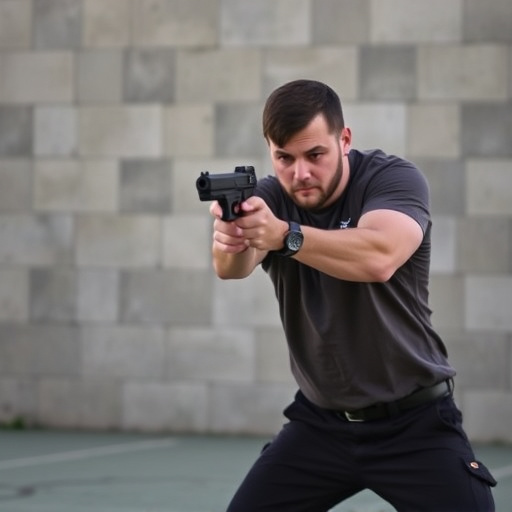
When it comes to personal safety, women have unique needs and preferences. Among self-defense tools, concealable stun guns are a popular choice for their discreet nature and effectiveness. These devices allow users to protect themselves in various situations without drawing undue attention. Top brands offer models designed specifically with women’s safety in mind, featuring compact sizes, ergonomic designs, and high-voltage outputs to ensure maximum impact.
Some of the most sought-after concealable stun guns for women include those from reputable manufacturers known for their quality and reliability. These tools often come equipped with additional features like LED flashlights, alarms, and multiple activation modes, providing users with versatile options in emergency situations. Their small size and weight make them easy to carry in purses, pockets, or concealed on the body, ensuring women can stay prepared for any unexpected event.
When choosing between a taser and stun gun, understanding their distinct capabilities is key. Tasers offer powerful immobilization with a longer range, while stun guns provide intense jolts within a shorter distance. For self-defense, both have legal considerations, but stun guns often prevail for concealed carry due to their smaller size and ease of use. Among popular choices, concealable stun guns specifically designed for women offer a practical and effective solution for personal safety without sacrificing style or convenience.
